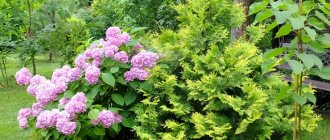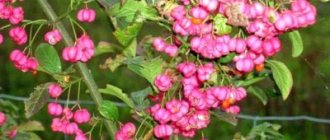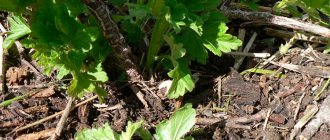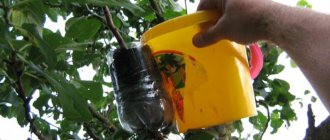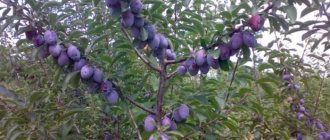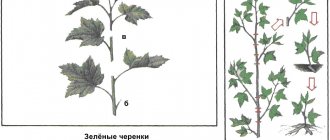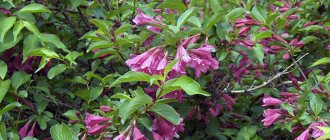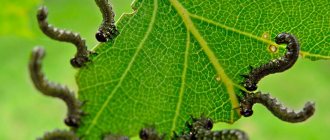- July 5, 2019
- Trees and shrubs
- Michael
In recent years, hedges have become increasingly popular in our country. This alternative to a conventional fence is chosen by summer residents and owners of private houses. Which is not surprising - it is beautiful, elegant and sophisticated. And very often, turf is used as the main plant for growing a hedge. True, to achieve an ideal result, you need to put in a lot of effort - to understand the intricacies of growing, caring for and forming a living fence. At the same time, it would be useful to learn about the propagation of variegated dogwood by cuttings.
Description
First of all, it’s worth talking about this plant as a whole. It is not by chance that variegated dogwood is used in landscape design. He is amazingly handsome and graceful.
But it is not found at all in the wild. The variegated turf appeared solely thanks to the painstaking work of breeders, who took as a basis the white turf, which has only green leaves.
Experienced breeders were able to significantly enrich the color palette, creating an amazing wealth of colors. Now the leaves have a border of yellow, golden, white, lime or cream color. The leaves are heart-shaped, the edges are smooth, and the central vein is clearly defined.
Young plants look like shrubs, but adults are more like trees. The height of the variegated tree bush reaches three meters with a crown diameter of up to five meters. The bark is very unusual - brick or bright coral color. In the sun it shines with a glossy tint. It is not surprising that the plant retains its beauty not only in summer, but also in winter, when the foliage falls. Perhaps some experts will agree that thanks to the bright bark against the backdrop of snow-white snowdrifts, the deren looks even more impressive.
An additional advantage is that variegated derain blooms twice a season. Accordingly, it also bears fruit twice. This first occurs in late May or early June. The appearance of berries occurs approximately 40-50 days later, that is, in the middle or end of July. The plant blooms for the second time in mid-to-late August. Accordingly, the harvest should be expected by October. By the way, the berries against the background of purple and red-orange leaves look simply gorgeous! The flowers are snow-white, collected in elegant inflorescences with a diameter of about four to five centimeters. The fruits are white-bluish, and in some cases greenish. Unfortunately, the berries are inedible.
A little about other types
Before talking about the propagation of variegated wood by cuttings, it is worth briefly talking about other representatives of this family - there are a lot of them and they differ quite greatly. In general, their number reaches fifty, but only a few plant species are of greatest interest for landscape design.
One of the most famous is the white dogwood, on the basis of which the variegated one was developed. It grows wild in Northern Asia. It is a tall (up to three meters) shrub, and reaches this height quite quickly. The leaves are dark green, sometimes with a bluish tint. In autumn they acquire a rich yellow color. The fruits and flowers are white. Young trees have bright red grass, while old trees have gray grass. It also blooms twice - in early summer and autumn. It is very unpretentious to soil, grows well in the shade and is not afraid of wind.
Blood red turf is also known as svidina. Grows in Central Europe. It is distinguished by its considerable height - with proper care and proper formation, up to eight meters. The leaves are dark green, elliptical in shape. By winter, the color changes significantly - from light orange and yellow to deep red. It is not picky about soil, but grows quite poorly in acidic and poor sandy soils and needs to increase the pH and additional fertilizing.
Male dogwood (also known as common dogwood) is the only plant of its kind with edible fruits. In the first years of life it grows rather slowly, but then it makes a leap and can easily grow up to eight meters. The young tree grows rapidly upward, and already in adulthood it becomes more rounded. The leaves are beautiful - green, with a shiny surface. It blooms with small yellow flowers for about three weeks. The aroma is subtle, pleasant, sweet. The fruits are edible and sour. Therefore, the derain will serve not only as a hedge, but also as a fruit crop.
Canadian derain is distinguished by the fact that it is not just shade-tolerant - it generally prefers not to grow in sunny areas. The best choice for him would be a shady area with high humidity. It's no surprise that it grows wild in Northern Asia, North America and even Greenland! It is the smallest - creeping bushes rarely reach a height of more than 15 centimeters. The leaves are dark green, but in autumn they become especially beautiful - red.
Planting and caring for derain
Planting a tree in open ground and subsequently caring for it is not difficult, nor is propagation. This shrub is not capricious and does not require much attention. All that is necessary for the proper development of the tree is the competent selection of a place for planting and compliance with the most basic rules for growing a plant.
Requirements for a place to plant dena:
- Most varieties prefer well-lit areas. Also, derain develops well in lightly shaded conditions.
- Soil moisture should be moderate. It does not need to be over-moistened, however, dry soil inhibits the growth of the tree in the same way as a wetland.
- The plant develops best on fertile, loose soils, however, this is not a mandatory requirement. With proper fertilization, the shrub can grow well in poor soils.
- It is not recommended to plant turf in an area with loamy heavy soil.
The groundwater level is not particularly important when selecting a location.
Important! In conditions of strong shading, the decorative quality of the tree is noticeably affected. Its foliage turns pale, and the spots and light border along the edges of the leaf blade in some varieties become completely invisible.
Landing dates
The timing of planting dena depends on the variety and method of propagation. You can follow the following recommendations:
- In the fall, fresh seeds collected shortly before, as well as cuttings of shrubs, are sown.
- In the spring, seeds that have gone through the stratification procedure and cuttings are sown in the ground.
Advice! In controversial situations, it is better to give preference to spring planting. This way, the seedlings will have more time to take root in the open ground.
How to plant turf correctly
All varieties of derain are planted approximately the same. The general landing scheme looks like this:
- 2-3 weeks before planting, the selected area is prepared by applying mineral and organic fertilizers.
- Holes are dug at a distance of 50 cm from each other, the size of which depends on the plant variety. They focus mainly on the size of the root system of the seedling and the earthen coma in which it is enclosed. The roots should fit freely into the planting hole.
- The bottom of the holes is covered with humus and mineral fertilizers.
- The planting material is slightly moistened and lowered into the hole. It is very important not to destroy the earthen lump.
- The hole is filled with the top layer of soil and lightly pressed down around the seedling.
- At some distance from the trunk, the plants form a shallow hole. So, after watering, the water will remain near the base of the bush.
- The planting of the tree is completed by watering.
Important! If you prepare the site before planting and fill the planting holes with soil mixture, subsequent fertilizing is not necessary for at least 3 years.
Watering and fertilizing
Derain does not tolerate prolonged drought, so water the plant regularly. It is not recommended to flood the plantings, but the soil should not dry out. Young plants especially need moisture.
Advice! Mulching the tree trunk area helps to better retain moisture in the soil. A layer of peat or straw up to 5 cm thick is used as mulch.
Fertilizers for tree development are not necessary, especially if the area for the plant was fertilized before planting. If the shrub grows in an unprepared place, feed the plant once a year in June or May.
Is it possible to replant turf with leaves in the fall?
It is not recommended to replant an adult plant - this can lead to its death. They do this only as a last resort.
The optimal time for transplantation is October-November, when the turf sheds its leaves, or March, while the buds have not yet swelled. At the same time, moving the plant in the fall is associated with less stress for the bush, however, replanting in the spring stimulates faster growth.
Important! When replanting this garden crop, it is important to maintain the integrity of the earthen coma.
How to prepare turf for winter
Most varieties of derain do not need to be covered for the winter. This is a fairly cold-resistant plant that can safely survive low temperatures.
The only exceptions are young seedlings. In the first year it is better to cover them, but in the future there is no need for this.
When to propagate turf?
If you are interested in propagating variegated dogwood by cuttings, then first of all you need to choose the right time. Fortunately, the favorable period is quite long - from March to June. If you are late and start propagating later, the cutting simply will not have time to acquire a powerful root system and store enough nutrients to survive the winter - most likely, the young plant will die.
But still, a tree lover has quite a lot of time to prepare planting material and acquire new plants.
Features of tree cuttings
There are many varieties of wood in nature.
However, vegetatively they are all similar, which means they have common reproductive features. Many gardeners consider cuttings to be the simplest and most affordable method.
Derain is a strong and unassuming plant, so it grows actively when minimally favorable conditions are created.
For decorative purposes, shrubs are usually pruned in spring or autumn. The resulting branches can be safely used as planting material.
A specially trimmed side shoot on a thick branch is also suitable for these purposes.
Not every branch can be considered a full-fledged cutting, but only one that meets certain requirements:
- The shoot has 7-9 intact and developed buds.
- It does not break when bent. Gardeners test twigs by pinching them between three fingers. The sample should return to its original shape after bending.
Blank
The propagation of the variegated dera shrub should begin with the preparation of planting material, and more specifically, cuttings. This is much faster than using berry seeds - you can save at least two to three years.
It is advisable to select young branches - green or slightly woody. Of course, the bush from which they will be cut must also be strong and strong. You can check the freshness (and therefore suitability for planting) of a branch by bending it. The overripe one will break, and the underripe one will not straighten up when it is released. If the branch did not break and immediately returned to its original position, then it can be cut off. Use sharp pruning shears for this, ensuring a perfectly even cut and not a frayed one.
If you can’t plant the cutting right away, it is advisable to wrap it in a damp cloth to prevent it from drying out. It is advisable to put it in a container with water for several days - when small roots appear, you can move on to the next step, namely, propagating variegated dogwood by cuttings.
Variegated dogwood propagation by cuttings – Garden and vegetable garden
There have been cases when the turf took root on its own, being used as supports for other plants.
If you need to get a large number of new plants, small woody cuttings 10–15 cm long are most often used.
Propagation of wood by cuttings from mature wood makes it possible to obtain almost 100% rooted plants, whereas when grown by green cuttings, the success rate is 10–30%. This discrepancy is due to the structural features of this plant.
In deren, the rudiments of future roots are located directly under the bark on mature wood along almost the entire length of the shoot. When the shoot finds favorable conditions, the roots “wake up” and begin to grow actively.
This feature of this plant allows it to be propagated by cuttings in water.
To do this, lignified branches from last year's shoots are cut with at least two internodes, the lower leaves are removed, the upper leaf blades are cut by half or a third, depending on the size of the leaf. This is done to reduce the evaporation of moisture by the plant.
If the leaves are small, they can be left whole.
The prepared cuttings are placed in a container of water so that the lower pair of buds is completely immersed in it.
Roots begin to form very quickly, and within a week the first few roots may appear on the branch.
With this type of rooting, it is important not to miss the timing of planting in the ground - young roots are fragile and delicate, easily damaged during planting, and the plant may not survive or suffer for a long time. It is best to plant cuttings when their roots reach a maximum of 1 cm. Such plants quickly take root and actively begin to grow.
Landing
Before planting, you need to dig a suitable hole - about 40 x 40 x 40 centimeters in size. Humus, turf soil or compost is poured onto the bottom. Clean sand is added on top - a layer of about three to five centimeters. Before planting the cuttings, you need to moisten the soil generously - then the young, weak roots will easily receive the right amount of moisture and will not dry out.
There is no need to deepen the cuttings much - five centimeters is enough. Moreover, some experts recommend planting it perpendicular to the ground, while others recommend directing it away from the sun at an angle of about 45 degrees.
Care
Of course, in order for the sprout to successfully take root and grow actively, it needs to be provided with proper care.
First of all, we must not forget about moisture. However, most types of derain easily tolerate moisture and do not shed leaves. Therefore, even in the absence of rain, it is enough to water it a couple of times a month, pouring about twenty liters of water onto the plant.
To speed up the growth rate, it is advisable to use fertilizers. In the spring, add minerals containing phosphorus. In the fall, organic matter is added under the trees - compost or manure, after which the soil is dug up to a shallow depth.
As you can see, there is nothing complicated here.
Types of Trimming
The next step to get a gorgeous green hedge is to trim the variegated tree.
In general, there are three types of pruning: sanitary, decorative (also formative) and rejuvenating.
Sanitation is needed if defective branches are found - broken or diseased. It is advisable to burn shoots affected by infection or parasites.
Formative pruning is aimed at giving the shapeless crown a neat, attractive appearance. Thanks to it, you can direct the growth of shoots exactly in the direction you want.
Finally, rejuvenating is intended for aged trees and bushes. Thanks to it, old shoots are replaced by new, more attractive ones, with the maximum number of flowers and fruits.
Protection from diseases and pests
Derain is a hardy plant, resistant to many diseases, however, it does not have absolute immunity. Bushes can be affected by the following fungal infections:
- powdery mildew;
- light brown spotting;
- red-brown spotting;
- whitish spotting;
- dark brown spotting.
Spot damage to plantings most often occurs in conditions of high humidity and heat in summer. Powdery mildew develops when the soil dries out and the nitrogen content in the garden plot is too high.
The following folk remedies have proven effective in the fight against fungus:
- soap solution with the addition of baking soda;
- garlic broth;
- horsetail decoction.
Ordinary fungicides also work well against these diseases.
Preventive measures designed to reduce the risk of plantings becoming infected with fungal infections include:
- treatment of seeds with potassium permanganate for seed propagation;
- disinfection of sharp objects used for pruning wood and propagating shrubs using vegetative methods;
- periodic pruning of dried and broken shoots;
- landing in compliance with the recommended distances;
- cleaning up fallen leaves.
The plant practically does not attract insects, however, the main pests can be identified as aphids and comma scale insects. Bushes are treated against them with an insecticide or a solution of laundry soap.
When to prune?
Before you start forming a variegated tree bush, you need to know how to choose the right time.
Decorative pruning is carried out twice per season - at the beginning of June and the end of July. In summer, green mass (foliage and branches) actively grows, so the intended silhouettes are disrupted - it is necessary to take measures to return the bushes to their original shape.
Radical pruning (rejuvenating) is usually performed in the fall, when the movement of sap stops.
Finally, sanitary can be carried out at any time - as needed.
Reproduction methods
There are many interesting types of derain. This is the widely popular white dogwood or white dogwood with red twigs-branches and bluish-gray leaves on the underside, and red dogwood, enchanting with its autumn purple foliage and black clusters of fruits, and male dogwood (dogwood), attractive for its sweet and sour edible fruits. Any of them is easily propagated using cuttings, layering, dividing the bush and seeds.
Seeds
This method of propagation is rarely chosen by amateur gardeners. It’s painfully troublesome, and you’ll have to wait for more than one year for the bush to reach its luxurious size. The flowering and ripening of derain fruits is very extended in time, so the seeds are collected in several stages. They can be sown in the fall, when the ground freezes a little, or in the spring. In the second case, the material must undergo stratification.
Usually, for this purpose, the seeds are placed in sand or sawdust and placed 2-3 months before the intended sowing in a refrigerator with a temperature no higher than 4˚C. Sowing is done to a depth of 3-4 cm.
Propagation of dogwood by cuttings
Since, like any other ornamental shrub, the dogwood needs pruning, it is not at all difficult to select suitable cuttings from the many trimmed stems. They should be:
- lignified;
- contain at least two internodes.
Leaves from the lower part of the cutting are removed; in the upper part they can be shortened by half. It is also permissible to use green cuttings, but their ability to root is usually no higher than 30%.
Propagating deren by cuttings in the fall has little chance of success; most likely, the plant will not have enough time to take root well before the onset of cold weather.
Rules for planting cuttings
There are two ways to achieve the appearance of roots in cuttings prepared for this purpose:
- placed in a jar of water;
- planted in the soil.
In water, the first roots begin to appear after 1-2 weeks. You should not wait for large sizes (more than 1 cm), because due to the fragility of the roots, planting in the ground will be difficult.
When planting cuttings directly into the soil, do so in rows at a slight angle, after spilling the soil with water. Dusting the lower sections with root or another similar stimulant will help improve the result. The planted material is covered with film or spunbond. Until the cuttings take root, keep the soil moist and spray and fertilize the shoots themselves. For the winter they will need to be covered with dry grass or spruce branches. Or you can transplant them into containers and move them to a cool room until spring.
By planting cuttings for rooting immediately in pots or containers, you can significantly simplify seasonal care manipulations: transferring them to winter maintenance and returning them to the greenhouse in the spring. By autumn, the strengthened cuttings are ready for planting in a permanent place.
Reproduction by dividing the bush
The simplest, most reliable method with quick results is dividing the bush. Of course, the original plant must be voluminous enough to have something to divide into several parts. This method includes the following steps:
- Removing the mother bush from its place of growth
- Forming individual “sections” using a knife
- Planting each in prepared planting holes
Reproduction using layering
Despite the fact that adult dera bushes are quite spreading, the plant itself does not root its branches. To do this, the selected shoots are bent to the ground and secured with staples, sprinkled with soil or a layer of mulch on top. The next year, in spring or autumn, the rooted cuttings can be separated by cutting the connection with the mother bush and planted in a separately prepared hole.
We carry out pruning correctly
As mentioned above, when working with wood, you need to use good tools - sharp, well assembled. Then the cut sites heal quickly, infection does not get there and juice loss is reduced to a minimum.
The optimal time for work is the evening or morning of a cloudy day. In hot weather, pruning should not be done - moisture loss will increase. But before the rain is also not the best time - the streams can wash away dust from the leaves, and with them the infection, which will get into fresh wounds.
It is quite difficult to give specific advice on pruning, especially. After all, a lot here depends on the aesthetic preferences of the gardener. You just need to give the bushes the shape you want and make sure that the plant does not “blur”.
With rejuvenating pruning, everything is simpler - you need to remove old branches with faded bark to restore attractiveness and youth. They are removed at the root.
Sanitary pruning will also not cause trouble. Cut off damaged branches entirely or 5-10 centimeters below the problem area.
